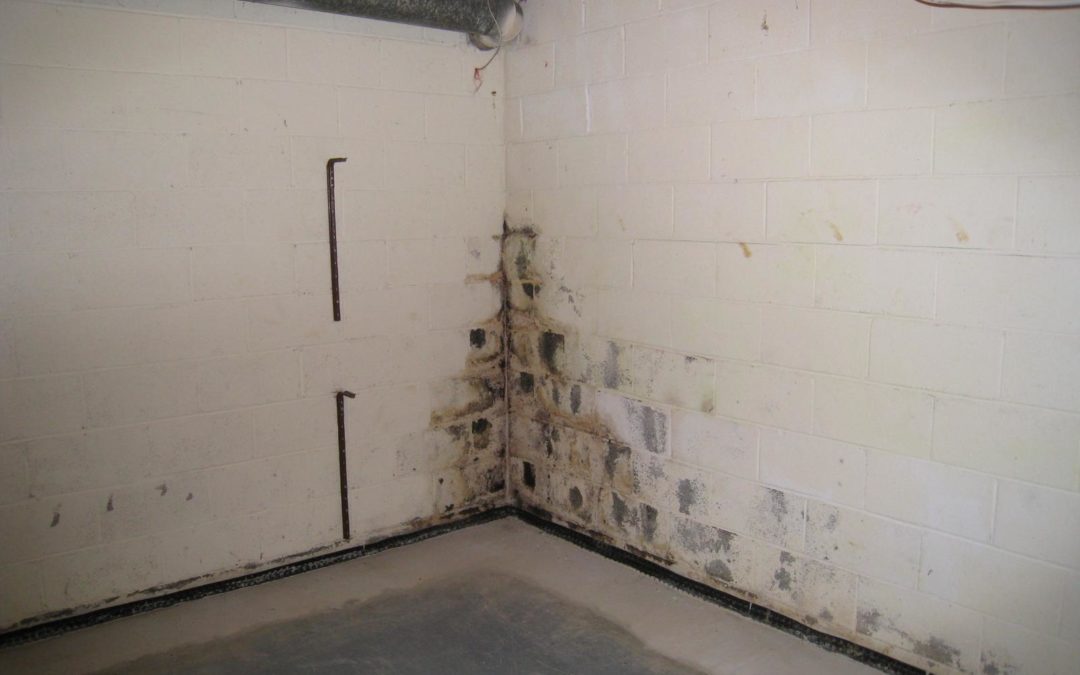The Hidden Threat Lurking in Your Basement
Basement mold can transform from a small, hidden problem into a major crisis that threatens both property values and family health. What starts as a subtle musty odor or small dark patches can quickly escalate into a serious issue that costs thousands to remediate and poses significant health risks.
Industry studies show mold infestations can reduce property values by 10-30% and create respiratory issues, allergic reactions, and other health concerns, particularly in children and elderly residents. The Environmental Protection Agency warns that most mold has the potential to cause health problems, making prevention absolutely crucial.
The good news? With the right knowledge and proactive measures, effective mold prevention is achievable. Homeowners can create an environment where mold simply cannot thrive through:
- Proper waterproofing
- Ventilation
- Moisture control techniques
This expert guide covers:
- Key warning signs of basement mold development
- How moisture and poor ventilation create ideal mold conditions
- Professional-grade prevention strategies for DIY implementation
- Lasting solutions that protect both home and health
- The critical role of basement waterproofing in mold prevention
Understanding Basement Mold: Causes and Risks
Basement mold poses significant risks to both home structures and occupant health. Understanding what causes mold growth and its associated risks is crucial for maintaining a mold-free basement environment.
Several key factors contribute to mold growth in basements. The primary culprit is excess moisture, which can manifest through multiple channels:
Common Moisture Sources:
- High humidity levels – above 60% relative humidity – create ideal conditions
- Water leaks through home’s foundation cracks
- Seepage through cove joints (where basement walls meet the basement floor)
- Poor air circulation trapping humid conditions
- Hydrostatic pressure forcing groundwater through concrete walls (in areas with high water tables or poor drainage)
The health problems from mold exposure are significant and shouldn’t be underestimated. Common health effects include:
Immediate Symptoms:
- Respiratory problems (coughing, wheezing)
- Throat irritation
- Allergic reactions
- Difficulty breathing
- Chest tightness (specifically in those with mold allergies or asthma)
Long-term exposure risks are particularly severe for children, elderly individuals, and those with compromised immune systems, potentially leading to chronic respiratory conditions (Mayo Clinic Mold Allergy).
Key warning signs include:
- Black, green, or white spotting on walls and floors
- Water damage or staining on surfaces
- Peeling or bubbling paint and wallpaper
- Distinct musty odor intensifies in humid weather
- Persistently damp surfaces or visible water vapor
- Warped wood or degrading organic material
These warning signs indicate underlying moisture issues that require immediate attention. Addressing problems at their source, rather than simply treating visible symptoms, is essential for effective mold prevention and remediation.

Essential Prevention Strategies
Since 1965, we’ve learned that preventing mold growth comes down to three critical areas of focus in basement waterproofing.
Moisture Control Basics
Humidity Control
The foundation of mold prevention starts with maintaining proper humidity levels
- Your basement’s relative humidity should stay between 30-50% – anything higher creates ideal conditions where mold spores thrive
- Install a high-quality digital hygrometer to monitor these levels consistently
Dehumidification
A properly sized dehumidifier is your first line of defense against excess moisture
- For most basements, a unit that removes 70 pints of moisture per day is ideal
- Position it centrally and ensure it drains continuously to prevent overflow
- Set it to maintain 45% humidity for optimal results
Ventilation
Proper ventilation is equally crucial
- Install an exhaust fan system that moves stale, humid conditions outside while bringing in fresh air
- Consider adding ceiling-mounted fans to keep air circulating, especially in corners where moisture tends to accumulate

External Prevention Measures
The best defense against basement moisture starts outside your home’s foundation.
External Moisture Protection
- Ensure your property has proper drainage systems in place
- Your gutters should be clean and functioning, with downspouts extending at least 6 feet from your basement walls
- French drains can provide additional protection in areas with poor natural drainage
Landscape Grading
- Regular maintenance of your landscape grading is essential
- The ground should slope away from your foundation at a rate of about 1 inch per foot for at least 6 feet
- Check this gradient annually, as soil can settle over time
Indoor Prevention Methods
Air Circulation
- Inside your basement, maintain consistent air circulation using strategically placed fans
- Pay special attention to corners and areas behind furniture where air can stagnate
- Keep your basement temperature steady – sudden temperature changes can lead to condensation and mold growth
Regular Inspection
- Conduct monthly inspections of your basement’s trouble spots
- Look for water leaks, check for musty odors, and examine pipes for condensation
- Early detection of moisture issues can prevent major mold problems down the line
Overall Approach
- These prevention strategies represent a proactive approach to basement moisture control
- When implemented together, they create an environment where mold simply can’t take hold
- Remember, maintaining a dry basement is far easier and more cost-effective than dealing with a mold infestation after it occurs
DIY Solutions and Preventive Measures
Before considering costly professional services, there are several effective strategies you can implement to prevent excess moisture and mold growth in your basement:
Interior Drainage Solutions
- Install a DIY basement waterproofing channel system along basement walls
- Add weep holes at floor level to relieve hydrostatic pressure
- Direct water to existing sump pump or floor drains
- Use moisture barriers on concrete walls to prevent water vapor penetration
Key DIY Steps:
- Clean and prepare basement surfaces thoroughly
- Install proper drainage channels
- Apply waterproof coating to walls
- Ensure proper ventilation and air circulation
Essential Tools and Materials:
- Waterproofing channel systems
- Moisture barriers
- Waterproof adhesive
- Basic tools (hardware store supplies, drill, level)
- Cleaning supplies
Cost-Effective Prevention:
- Maintain gutters and downspouts
- Grade soil away from home’s foundation
- Install underground downspout extensions
- Use dehumidifiers in high humidity seasons
Most basement moisture issues can be resolved through these DIY methods.
When to Call a Professional
While many basement waterproofing projects can be handled as DIY, certain situations require professional expertise:
- Structural foundation issues
- Severe water leaks and infiltration problems
- Complex drainage system installations
- When DIY solutions haven’t resolved the mold problem
- If you notice cracks in foundation walls
- When mold growth persists despite prevention efforts
Professional waterproofing contractors bring specialized equipment, extensive experience, and warranty-backed solutions. While more expensive than DIY, professional mold remediation may be necessary for lasting protection in challenging situations.
Remember: The key to successful waterproofing is addressing the water source rather than just treating symptoms. Focus on proper drainage and pressure relief for lasting results.
Maintaining a Mold-Free Basement
After installing proper waterproofing solutions, maintaining a mold-free basement requires vigilant monitoring and regular maintenance. A systematic approach to basement mold prevention will ensure your waterproofing investments continue to protect your home’s foundation for years to come.
Monthly Inspection Checklist:
- Check wall-floor joints, window wells, and pipe penetrations for moisture
- Test sump pump operation and backup battery charge
- Look for warning signs: musty odors, water stains, or pipe condensation
Seasonal Maintenance Tasks:
- Spring: Clean gutters and ensure downspouts direct water 8-10 feet from foundation
- Winter prep: Insulate exposed pipes and seal air leaks
- Rain season: Keep backup sump pump ready and maintain clear foundation drainage
Monitoring System:
- Track humidity levels (30-50%) with digital hygrometer
- Monitor air quality with CO2 detectors
- Check drainage patterns after heavy rains
- Observe sump pump cycling frequency
Need Waterproofing Solutions?
Visit Waterproof.com for industry-leading equipment, comprehensive installation guides, and expert DIY support. With over 50 years of experience, we offer complete basement waterproofing systems. Trust the experts for all your basement waterproofing needs.

